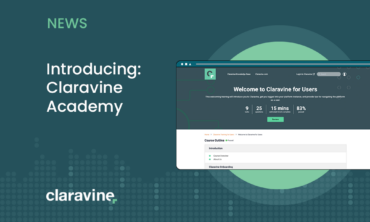We are All Publishers Now
I spent 15 years working in the online publishing industry. One of the last professional events I attended while still on the media was an IAB-affiliated event about the “future of media and advertising.” I recall one of the speakers ignoring the publishers in the room completely. He directed his remarks toward the vendors and big brand players in the room. His advice to them was “work toward a future where your organization produces content that is so good, you’ll put the Industry Trade Magazine in your market right out of business…”
Since I worked for a big B2B trade publisher at the time, I found this idea kind of out there. But it definitely stuck with me.
After making the transition to marketing on the vendor side, that remark has come back to mind several times. While I think there’s a bit of hyperbole to relinquish there (I don’t see industry publishers going away overnight, if ever) I have become a convert to the great equalization happening in publishing and media. The speaker at that event was more right than he was wrong.
It goes without saying that there are many, many ways to find an audience these days. That’s not to say it’s an easy thing to do, but the tools are there for the diligent. Every day I’m bombarded with messages from people who want to teach me “the secrets” of getting 100k twitter followers, or of quitting my job to make my living from Instagram (which, to be honest, sounds very stressful).
It’s so obvious and intuitive that social media has ruptured traditional media, that I think it’s worth backtracking a bit to remember why the industry-media tradition existed — and the strengths that gave it a lock on people’s attention in the first place.
- Networks/Audiences. In the pre-social media world, Publishers’ main strength arose from the networks they built. Brands that wanted cheap PR coverage were willing to let writers inside the curtain, in a way they wouldn’t do for a competitor. A publisher who had success at becoming an insider in this way soon found they had access to more and more information, in a virtuous cycle of reputation-building. Reputation = Subscribers. Publishers became the central node for information-sharing — even for finding a new job within a given industry.
- Expertise. My personal feeling is that many journalists and writers who position themselves as “experts” are exaggerating. Nevertheless, the sort of insider access that publishers have been privy to does create a position of strength. Publishers often hear things (ideas/trends) before they become common knowledge. If they hear the same things from many sources, anecdote can become data. Scoops = Subscribers. And there is value simply in looking at industries as a whole ecosystem — something vendors may resist.
- Objectivity. Again, a claim that can be overblown (publishers are human, and have been known to play favorites, e.g., anointing a brand they like as the “next big thing”). Still, publishers know they walk a fine line of credibility. Lose your readers’ trust and you have lost everything. The great media winnowing of the last few years has seen dozens of trade publications fall in just this way. Newer rivals were able to accuse them of putting their editorial up for sale to sponsors. Trust = Subscribers. Those media outlets that are standing are those that have managed this reality best.
As a brand marketer or vendor, it’s worth thinking through this, because the great equalization in media means that almost any brand has the ability to build these strengths independent of any traditional media or platform.
Is there anyone in your industry niche that has greater subject matter expertise around the solution you provide then you do? It’s highly unlikely. Is it possible to build your own independent network and audience, using platforms like LinkedIn, Medium and Twitter? Does that question even need answering in 2017? Is it possible to use customer testimonials, influencer-advocates and 3rd party product review sites to approximate some of the strengths that traditional media’s objectivity brought to bear? Well…
This last point is the hardest for sure, and it’s where a lot of vendors’ efforts fall short. Remember the strengths that bring in subscribers? Reputation, Networks, Leading-edge Insights and Trust. Some vendors give less emphasis to trust-building because of a short-term focus on creating leads and closing sales. That’s a shame. When you start thinking like a publisher, you think about a long-term relationship with your audience. Your audience is composed of people. People are subscribers first — they want to learn. If they turn into leads at some point down the road, that’s great. But maybe they won’t ever be leads, maybe they’ll just be readers who like your content and share it with their network. That’s great too.
If we’re all publishers now — and I’d argue that it’s valuable to think this way — it’s prudent to think of our audience as subscribers, rather than leads. We can think about content that informs and educates our audience — content that tells the truth. Even if it doesn’t help you make the sale today, it will help tomorrow.



